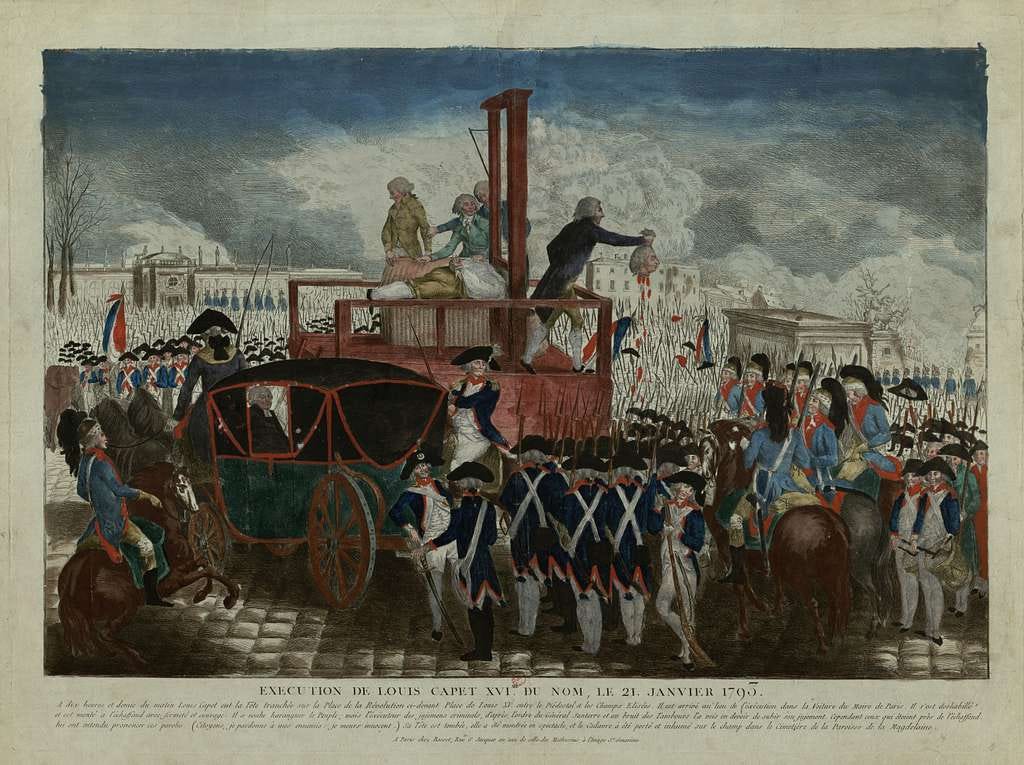What to Expect When You're Expecting the French Revolution
My chapter from Planning for War at Sea
In the last post, I was pleased to announce the release of my latest book, edited with Paul Kennedy:
Herewith the second and final promotional post for Planning for War at Sea, out now from Naval Institute Press. In addition to co-editing the book, I also contributed a chapter, entitled “What to Expect When You’re Expecting the French Revolution.” Below the cover image and the button, you’ll find a summary of the chapter.
What to Expect When You’re Expecting the French Revolution
(abridged version)
Perhaps no two navies in world history have had as much time to think about the other, and as much experience fighting the other, as the British and French navies in the eighteenth century. From 1744 to 1815, they were at war with each other for nearly six years out of every ten, a span that one historian has called the “Seventy Years War.”1 It is an apt term, reflecting the many years of open conflict but also the way each side used peacetime. It was usually assumed that peace would not last, which meant that it was imperative to prepare for the next conflict.
My chapter begins with the naval arms race among Britain, France, and Spain in the 1780s, in the aftermath of the American Revolutionary War (1775–1783). I show that Britain won the naval arms race and entered the 1790s with a strong economy and navy. France not only lost the arms race, but the costs of the arms race contributed to the financial crisis that caused Louis XVI to call the Estates General, thereby precipitating the French Revolution in 1789. Over the course of the next few years, Louis lost his head, and the navy lost its leadership. All French naval officers were of noble birth, and many fled into exile. The civil war and chaos of the revolutionary years left the fleet in no state to meet the British when the European war began in 1792 and 1793.
My chapter focuses on the British in the early 1790s. Britain’s victory in the naval arms race underplays the advantages it enjoyed. It was not just that the British had a stronger navy: Britain also had a competent, experienced leadership team—William Pitt had been in office for ten years—while France had just guillotined its king. Moreover, Pitt and his team understood many of the mistakes that Britain had made in the American War and had a clear plan for avoiding them in the next war.
Yet in the event, Britain lost the French Revolutionary Wars (1792–1801). It turned out that Britain’s strategy was wrongly conceived and poorly executed. What went wrong? I argue that Pitt and his team failed to understand the ways in which their enemy had changed during the Revolution. They were no longer fighting Louis XVI’s France—literally, as he was dead—but more than that, they were no longer fighting a France whose foreign policy was shaped by dynastic concerns. British leadership was slow to recognize that the Revolution changed both why France was fighting and how France would fight, and that those changes should have major implications for British strategy.
On witnessing the French victory at Valmy in 1792, the German poet Goethe said, “On this day begins a new era in the history of the world.”
In the chapter, I survey contemporary commentators who called attention to the fundamental changes in France’s war aims. I try to be as forgiving as possible, since it’s much easier for us to understand that the French Revolution was a watershed moment than it was for those living through it. Nevertheless, France’s war aims had clearly changed. The new Republic sought, first and above all, its own survival. To a much greater degree than Louis XVI’s France, the Republic’s enemies were both foreign and domestic, and its aspirations were as much ideological as geopolitical.
In a war against this new kind of enemy, how could British sea power best influence events on land? What I show is that Pitt and his team recognized that they needed to adjust their strategy based on France’s changes, but they came to that recognition too late. Moreover, they committed the basic strategic blunder of dividing their forces into three, weakening each fatally.
Pitt’s original plan at the onset of the war was to send an expedition to the French West Indies. Pitt thought that capturing economically valuable French sugar islands would have provided Britain with chips to play in negotiations to end the war while simultaneously damaging France’s maritime economy. That was not a crazy strategy against pre-Revolutionary France, but it was not the right strategy to attack Republican France. The British expedition to the West Indies sailed and did capture valuable islands, but it was soon overwhelmed by French reinforcements which took the unprecedented step of announcing the abolition of slavery. Doing so dramatically overturned the usual patterns of war in the Caribbean, and, in concert with the usual casualties from disease and hurricanes, the French managed to recapture all that they had initially lost.
Another reason why the British expedition to the West Indies failed was that Pitt and his team weakened and delayed the expedition in the hopes of taking advantage of two opportunities in France itself. In the spring of 1793, a major rebellion against the French Republic emerged in the Vendée region. In the summer, a different group of counterrevolutionaries took control of France’s largest naval base in the Mediterranean, Toulon, and offered the French Mediterranean fleet to the British blockading squadron.
Pitt weakened the West Indies expedition to provide support to the Vendée rebels, but British support was half-hearted and the two sides failed to coordinate. The result was a catastrophe, as Republican French forces brutally suppressed the rebellion and slaughtered 225,000–250,000 people in the aftermath. Toulon, in contrast, was more of a missed opportunity than a catastrophe. Pitt again weakened the West Indies expedition to provide support, but poor communication both with the admiral on the spot and between the British and Spanish meant that the city’s defenses were insufficient. Revolutionary forces including a young Napoleon Bonaparte overran the city. (That’s the first combat scene in the recent terrible movie—see the image below.) The British and Spanish managed to destroy nine ships of the line and burn some stores, but thirteen ships of the line and five frigates escaped.
I conclude the chapter with an assessment of what went wrong for the British from the perspective of naval strategy. The audience for this section is mostly contemporary practitioners, because that’s one of the goals of the book. I argue that while peacetime investments provide a platform for success, they are not themselves sufficient. They need to be paired with a good understanding of the enemy’s war aims, the ways in which that understanding should shape one’s own war aims, and how that shapes the deployment of force. In that case, the question Pitt and his team should have asked themselves, was: How might the enemy’s new ideological underpinnings cause them to behave, and does that suggest that our best approach is to stick to our pre-war strategy, or adjust based on new information? Both approaches might have worked, but the middle path did not.
Anthony Page, Britain and the Seventy Years War, 1744–1815: Enlightenment, Revolution, and Empire (London: Palgrave Macmillan, 2014).







